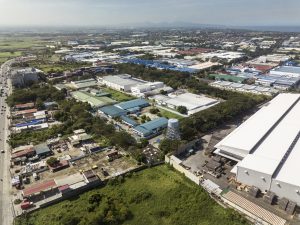In February, President Ferdinand Marcos Jr. of the Philippines signed into law the Tatak Pinoy (Proudly Filipino) Act, a formal policy directing the government to support the development of domestic industry. To achieve this, the Act creates a Council chaired by the Secretary of Trade and Industry to plan, implement and monitor a national industrialization strategy. It requires the government, for a period of 10 years, to procure locally made goods and creates special “green lanes” for expediting permits, licenses, and certifications for priority projects.
At this point many of the key details remain a little bit vague. The Act calls for prioritizing human resources, infrastructure, technology, innovation and investment and talks about forging strong links between academia, government, and industry. But it doesn’t get overly specific about how all of this will work in practice. For now, the Tatak Pinoy Act is probably best thought of as an organizing framework intended to set the tone, get key actors on the same page, and direct them toward a shared vision.
What is that vision? The Philippines, like many emerging markets, wants to move up higher in global value chains and expand the role of domestic manufacturing in this effort. They want to make increasingly sophisticated and valuable products and then sell them, either domestically or as exports. To that end, the Tatak Pinoy Act signals the Philippines’ desire and intention to push into more valuable manufacturing activities that occupy higher positions in domestic and international production networks.
The Philippines has passed several bills designed to support this vision, such as the 2021 CREATE Act (subsequently amended in 2024) which tweaks the tax system to make it more business-friendly. They also in recent years opened several strategic sectors with up to 100 percent foreign ownership. These efforts, complemented by the strategic framework articulated in the Tatak Pinoy Act, are to establish the foundation for more investment, more exports and more industrial-led growth.
They have a long road to travel, however. The Philippines typically imports a lot more goods than it exports and the deficit has been widening in recent years. According to balance of payment data at Bangko Sentral ng Pilipinas, in 2023 the Philippines imported almost $66 billion more in goods than it exported. The goods that they export are heavily concentrated in electronic products.
The goal of the Tatak Pinoy Act is to diversify the industrial base and manufacture a wider array of value-added goods, both for domestic consumption and for global markets. If done successfully, this will narrow the goods deficit in the balance of payments and we will see the Philippines begin producing and exporting a larger variety of products in addition to electronics.
It’s worth noting that the current state of the global economy makes such a strategy particularly challenging, as many countries around the world are increasingly looking inward, erecting trade barriers, and focusing on protecting and growing local industries just like the Philippines. As a result, global demand for exported goods has softened considerably, which is hurting export-oriented economies like Thailand.
Another challenge is that many of the Philippines’ regional peers who are pursuing industrialization strategies are doing so with a much greater degree of state support. Indonesia is also looking to expand its domestic industry and has set its sights on establishing a foothold in clean energy supply chains. This strategy is being explicitly championed by the state through the use of export bans on nickel, for instance. The Philippines, which has one of the more market-oriented economies in the region, is unlikely to see the same level of direct state support in pursuit of its industrial ambitions.
The Tatak Pinoy Act states that the policy of the State is to “encourage, support, and promote the production and offering of Philippine products and services” while also stressing that this is to be done in “collaboration with the private sector” and be “market-driven.” In other words, it creates a strategic mandate to boost domestic manufacturing, but is not a full-throated call for the same kinds of state-led industrial policies we see in some other countries.
Will that be enough for the Philippines to push into higher value-added links in domestic and global supply chains? Time will tell, but given the degree of state support enjoyed by competitor countries, as well as rising protectionist tendencies in the global economy, it’s a tough time to be in the industrialization and export-led growth business right now.

































